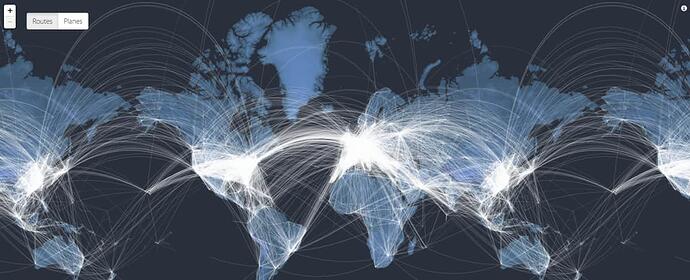Radio
Another development of enormous importance to aviation was radio. Aviation and radio developed almost in lock step. Marconi sent his first message across the Atlantic on the airwaves just two years before the Wright Brothers? first flight at Kitty Hawk. By World War I, some pilots were taking radios up in the air with them so they could communicate with people on the ground. The airlines followed suit after the war, using radio to transmit weather information from the ground to their pilots, so they could avoid storms
An even more significant development, however, was the realization that radio could be used as an aid to navigation when visibility was poor and visual navigation aids, such as beacons, were useless. Once technical problems were worked out, the Department of Commerce constructed 83 radio beacons across the country. They became fully operational in 1932, automatically transmitting directional beams, or tracks, that pilots could follow to their destination. Marker beacons came next, allowing pilots to locate airports in poor visibility. The first air traffic control tower was established in 1935 at what is now Newark International Airport in New Jersey
The First Modern Airliners
Boeing built what generally is considered the first modern passenger airliner, the Boeing 247. It was unveiled in 1933, and United Air Lines promptly bought 60 of them. Based on a low-wing, twin-engine bomber with retractable landing gear built for the military, the 247 accommodated 10 passengers and cruised at 155 miles per hour. Its cabin was insulated, to reduce engine noise levels inside the plane, and it featured such amenities as upholstered seats and a hot water heater to make flying more comfortable to passengers. Eventually, Boeing also gave the 247 variable-pitch propellers, that reduced takeoff distances, increased the rate of climb, and boosted cruising speeds
Not to be outdone by United, TWA went searching for an alternative to the 247 and eventually found what it wanted from the Douglas Aircraft Company. Its DC-1 incorporated Boeing’s innovations and improved upon many of them. The DC-1 had a more powerful engine and accommodations for two more passengers than did the 247. More importantly, the airframe was designed so that the skin of the aircraft bore most of the stress on the plane during flight. There was no interior skeleton of metal spars, thus giving passengers more room than they had in the 247.The DC-1 also was easier to fly. It was equipped with the first automatic pilot and the first efficient wing flaps, for added lift during takeoff. However, for all its advancements, only one DC-1 was ever built. Douglas decided almost immediately to alter its design, adding 18 inches to its length so it could accommodate two more passengers. The new, longer version was called the DC-2 and it was a big success, but the best was still to come
The DC-3
Called the plane that changed the world, the DC-3 was the first aircraft to enable airlines to make money carrying passengers. As a result, it quickly became the dominant aircraft in the United States, following its debut in 1936 with American Airlines (which played a key role in its design).
The DC-3 had 50 percent greater passenger capacity than the DC-2 (21 seats versus 14), yet cost only ten percent more to operate. It also was considered a safer plane, built of an aluminum alloy stronger than materials previously used in aircraft construction. It had more powerful engines (1,000 horsepower versus 710 horsepower for the DC-2), and it could travel coast to coast in only 16 hours - a fast trip for that time.
Another important improvement was the use of a hydraulic pump to lower and raise the landing gear. This freed pilots from having to crank the gear up and down during takeoffs and landings. For greater passenger comfort, the DC-3 had a noise-deadening plastic insulation, and seats set in rubber to minimize vibrations. It was a fantastically popular airplane, and it helped attract many new travelers to flying.
Pressurized Cabins
Although planes such as the Boeing 247 and the DC-3 represented significant advances in aircraft design, they had a major drawback. They could fly no higher than 10,000 feet, because people became dizzy and even fainted, due to the reduced levels of oxygen at higher altitudes.
The airlines wanted to fly higher, to get above the air turbulence and storms common at lower altitudes. Motion sickness was a problem for many airline passengers, and an inhibiting factor to the industry’s growth.
The breakthrough came at Boeing with the Stratoliner, a derivation of the B-17 bomber introduced in 1940 and first flown by TWA. It was the first pressurized aircraft, meaning that air was pumped into the aircraft as it gained altitude to maintain an atmosphere inside the cabin similar to the atmosphere that occurs naturally at lower altitudes. With its regulated air compressor, the 33-seat Stratoliner could fly as high as 20,000 feet and reach speeds of 200 miles per hour.
The Civil Aeronautics Act of 1938
Government decisions continued to prove as important to aviation’s future as technological breakthroughs, and one of the most important aviation bills ever enacted by Congress was the Civil Aeronautics Act of 1938. Until that time, numerous government agencies and departments had a hand in aviation policy. Airlines sometimes were pushed and pulled in several directions, and there was no central agency working for the long-term development of the industry. All the airlines had been losing money, since the postal reforms in 1934 significantly reduced the amount they were paid for carrying the mail.
The airlines wanted more rationalized government regulation, through an independent agency, and the Civil Aeronautics Act gave them what they needed. It created the Civil Aeronautics Authority (CAA) and gave the new agency power to regulate airline fares, airmail rates, interline agreements, mergers and routes. Its mission was to preserve order in the industry, holding rates to reasonable levels while, at the same time nurturing the still financially-shaky airline industry, thereby encouraging the development of commercial air transportation.
Congress created a separate agency - the Air Safety Board - to investigate accidents. In 1940, however, President Roosevelt convinced Congress to transfer the accident investigation function to the CAA, which was then renamed the Civil Aeronautics Board (CAB). These moves, coupled with the tremendous progress made on the technological side, put the industry on the road to success.
World War II
Aviation had an enormous impact on the course of World War II and the war had just as significant an impact on aviation. There were fewer than 300 air transport aircraft in the United States when Hitler marched into Poland in 1939. By the end of the war, U.S. aircraft manufacturers were producing 50,000 planes a year.
Most of the planes, of course, were fighters and bombers, but the importance of air transports to the war effort quickly became apparent as well. Throughout the war, the airlines provided much needed airlift to keep troops and supplies moving, to the front and throughout the production chain back home. For the first time in their history, the airlines had far more business - for passengers as well as freight - than they could handle. Many of them also had opportunities to pioneer new routes, gaining an exposure that would give them a decidedly broader outlook at war’s end.
While there were numerous advances in U.S. aircraft design during the war, that enabled planes to go faster, higher, and farther than ever before, mass production was the chief goal of the United States. The major innovations of the wartime period - radar and jet engines - occurred in Europe.
The Jet Engine
Isaac Newton was the first to theorize, in the 18th century, that a rearward-channeled explosion could propel a machine forward at a great rate of speed. However, no one found a practical application for the theory until Frank Whittle, a British pilot, designed the first jet engine in 1930. Even then, widespread skepticism about the commercial viability of a jet prevented Whittle’s design from being tested for several years.
The Germans were the first to build and test a jet aircraft. Based on a design by Hans von Ohain, a student whose work was independent of Whittle’s, it flew in 1939, although not as well as the Germans had hoped. It would take another five years for German scientists to perfect the design, by which time it was, fortunately, too late to affect the outcome of the war.
Whittle also improved his jet engine during the war, and in 1942 he shipped an engine prototype to General Electric in the United States. America’s first jet plane - the Bell P-59 - was built the following year.
Radar
Another technological development with a much greater impact on the war’s outcome (and later on commercial aviation) was radar. British scientists had been working on a device that could give them early warning of approaching enemy aircraft even before the war began, and by 1940 Britain had a line of radar transceivers along its east coast that could detect German aircraft the moment they took off from the Continent. British scientists also perfected the cathode ray oscilloscope, which produced map-type outlines of surrounding countryside and showed aircraft as a pulsing light. Americans, meanwhile, found a way to distinguish between enemy aircraft and allied aircraft by installing transponders aboard the latter that signaled their identity to radar operators.
Dawn of the Jet Age
Aviation was poised to advance rapidly following the war, in large part because of the development of jets, but there still were significant problems to overcome. In 1952, a 36-seat British-made jet, the Comet, flew from London to Johannesburg, South Africa, at speeds as high as 500 miles per hour. Two years later, the Comet’s career ended abruptly following two back-to-back accidents in which the fuselage burst apart during flight - the result of metal fatigue.
The Cold War between the Soviet Union and the United States, following World War II, helped secure the funding needed to solve such problems and advance the jet’s development. Most of the breakthroughs related to military aircraft that later were applied to the commercial sector. For example, Boeing employed a swept-back wing design for its B-47 and B-52 bombers to reduce drag and increase speed. Later, the design was incorporated into commercial jets, making them faster and thus more attractive to passengers. The best example of military - civilian technology transfer was the jet tanker Boeing designed for the Air Force to refuel bombers in flight. The tanker, the KC-135, was a huge success as a military plane, but even more successful when revamped and introduced, in 1958, as the first U.S. passenger jet, the Boeing 707. With a length of 125 feet and four engines with 17,000 pounds of thrust each, the 707 could carry up to 181 passengers and travel at speeds of 550 miles per hour. Its engines proved more reliable than piston-driven engines - producing less vibration, putting less stress on the plane’s airframe and reducing maintenance expenses. They also burned kerosene, which cost half as much as the high-octane gasoline used in more traditional planes. With the 707, first ordered and operated by Pan Am, all questions about the commercial feasibility of jets were answered. The Jet Age had arrived, and other airlines soon were lining up to buy the new aircraft.
The Federal Aviation Act of 1958
Following World War II, air travel soared, but with the industry’s growth came new problems. In 1956 two aircraft collided over the Grand Canyon, killing 128 people. The skies were getting too crowded for existing systems of aircraft separation, and Congress responded by passing the Federal Aviation Act of 1958.
The legislation created a new safety regulatory agency, the Federal Aviation Agency, later called the Federal Aviation Administration (FAA) when Congress created the Department of Transportation (DOT) in 1967. The agency was charged with establishing and running a broad air traffic control system, to maintain safe separation of all commercial aircraft through all phases of flight. In addition, it assumed jurisdiction over all other aviation safety matters, such as the certification of aircraft designs, and airline training and maintenance programs. The Civil Aeronautics Board retained jurisdiction over economic matters, such as airline routes and rates.
Wide-bodies and Supersonics
1969 marked the debut of another revolutionary aircraft, the Boeing 747, which, again, Pan Am was the first to purchase and fly in commercial service. It was the first wide-body jet, with two aisles, a distinctive upper deck over the front section of the fuselage, and four engines. With seating for as many as 450 passengers, it was twice as big as any other Boeing jet and 80 percent bigger than the largest jet up until that time, the DC-8.
Recognizing the economies of scale to be gained from larger jets, other aircraft manufacturers quickly followed suit. Douglas built its first wide-body, the DC-10, in 1970, and only a month later, Lockheed flew its contender in the wide-body market, the L-1011. Both of these jets had three engines (one under each wing and one on the tail) and were smaller than the 747, seating about 250 passengers.
During the same period of time, efforts were underway in both the United States and Europe to build a supersonic commercial aircraft. The Soviet Union was the first to succeed, testing the Tupolev 144 in December of 1968. A consortium of West European aircraft manufacturers first flew the Concorde two months later and eventually produced a number of those fast, but small, jets for commercial service. U.S. efforts to produce a supersonic passenger jet, on the other hand, stalled in 1971 due to public concern about it’s expense and the sonic boom produced by such aircraft.
always, History is going to be a lot of reading…
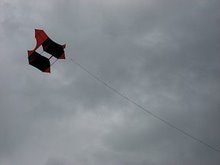


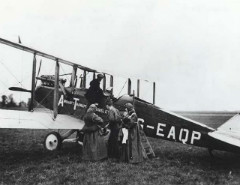
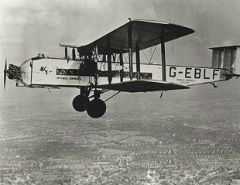
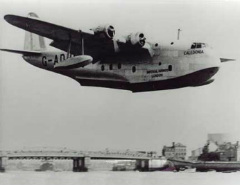
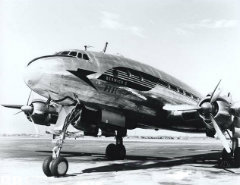
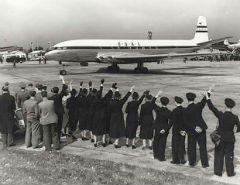
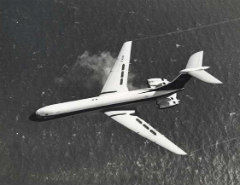
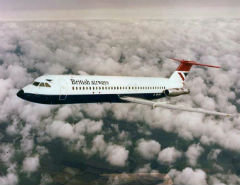
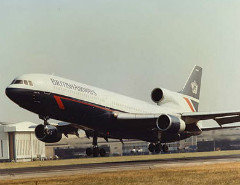
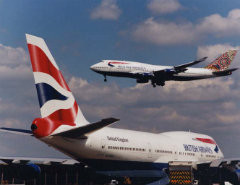
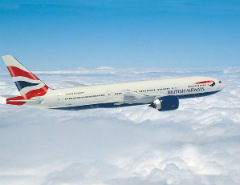
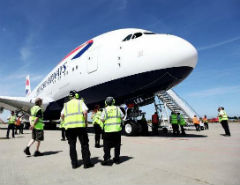


 by the way!)
by the way!)
